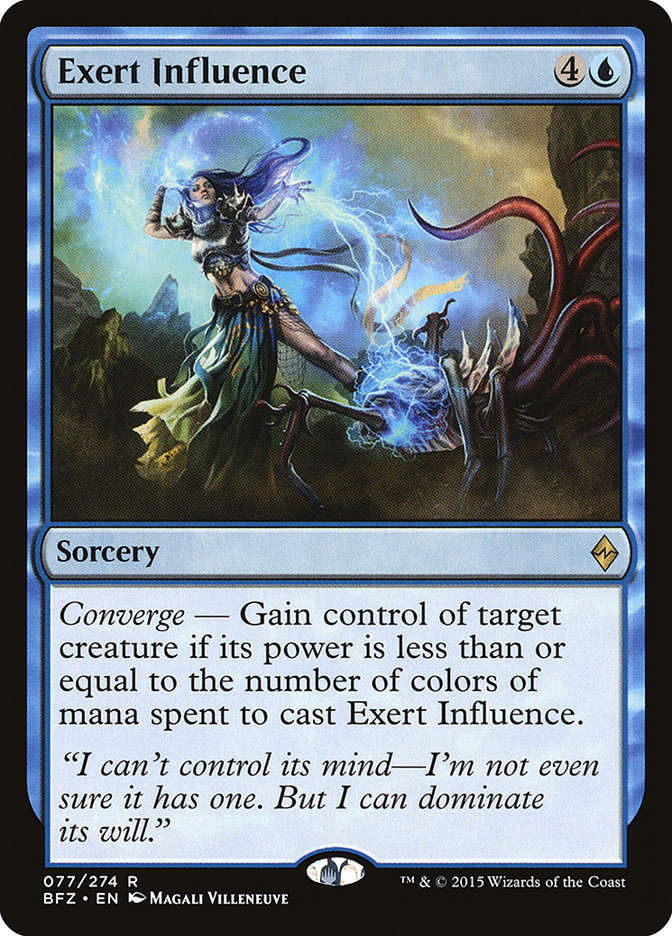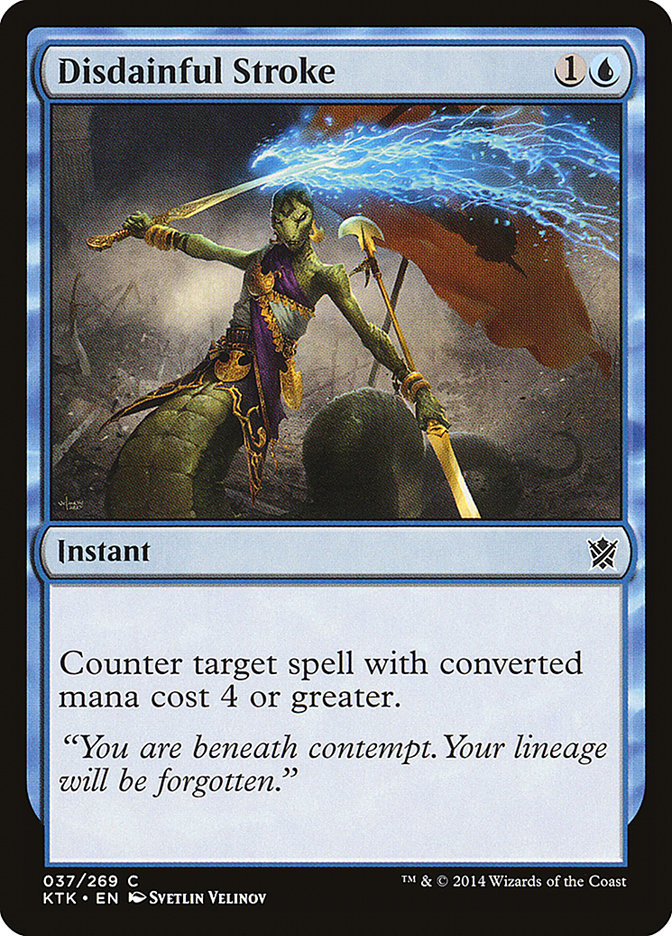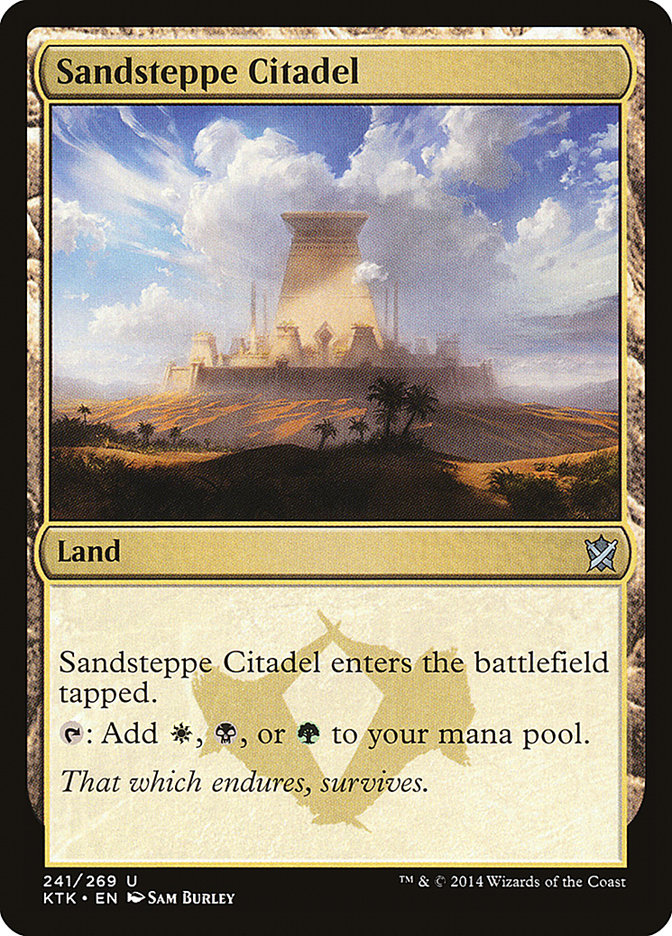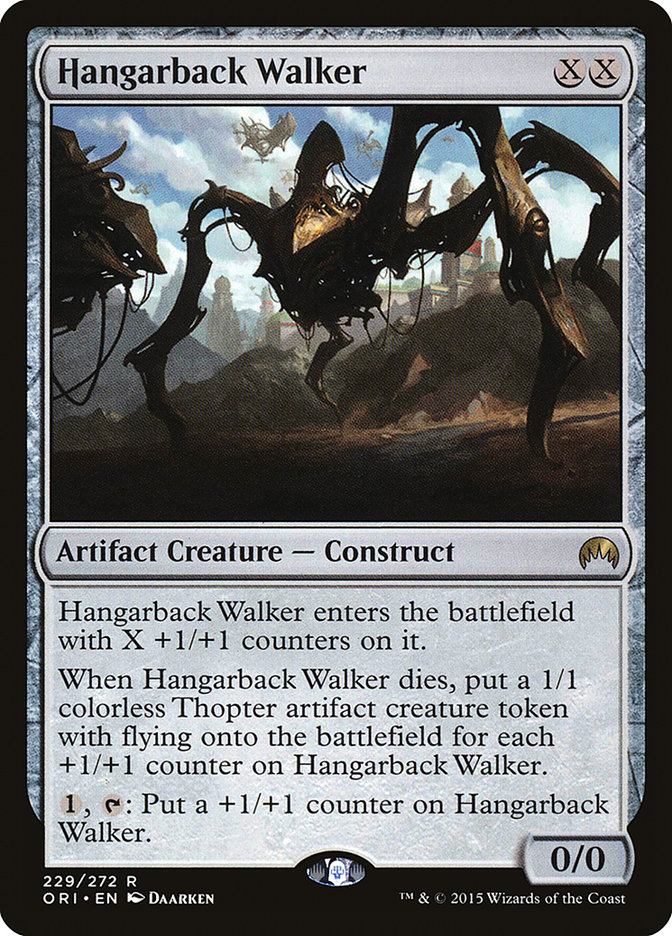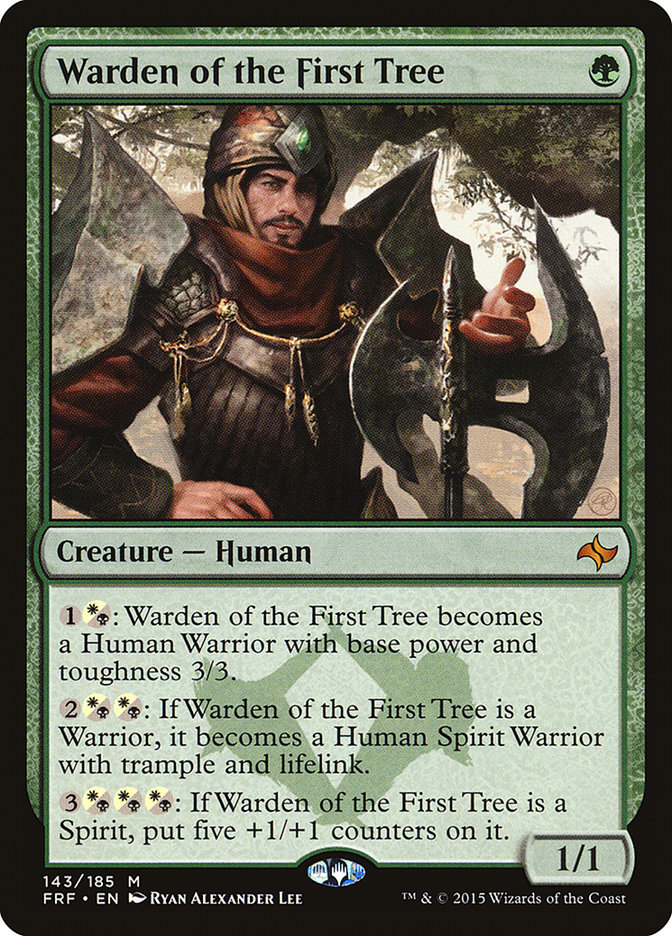Last weekend was the first event of the new Standard format with the Open Series in Indianapolis. I prepared for the week leading up to the event with a
deck that excited me. I was able to somehow con a bunch of my friends into also playing the deck. The deck was Abzan, but with a twist. Abzan Blue, you
might call it. SCG didn’t call it that when they named the deck, but still, it’s a name you could call the deck.
What was this Abzan Blue I speak of? Here’s the deck and a deck technology courtesy of Nicholas Miller and the StarCityGames crew:
The idea behind this deck comes down to the way manabases tend to be built in this format. If you want to curve out and have your lands enter the
battlefield untapped, then you need to maximize a fetch-basic-Battle land manabase. This means that you want to play like 14-16 fetchlands along with a
handful of basic lands and Battle lands to fetch with them.
The best starts with this deck are basic into basic into a flurry of Battle lands. For example, Forest into Plains into Sunken Hollow is a
pretty…basic…start to the deck that allows you to curve out and also gives you access to all of your colors of mana. If you play a Sandsteppe Citadel
and Shambling Vents manabase, your lands are going to mostly enter the battlefield tapped and you won’t even necessarily have all the right colors anyway
or have to take a huge chunk of damage in painlands to cast your spells later in the game. I’d rather take that damage upfront with fetchlands, get the
right colors of mana entering the battlefield untapped, and then be able to use my graveyard to play stuff like Murderous Cut or Tasigur, the Golden Fang.
By virtue of setting up a fetch-basic-Battle land manabase, there are going to be a few sources of other colors of mana in the deck in order to facilitate
versatility in fetchlands. You need Sunken Hollow so that Flooded Strand can get all three colors of mana. It can fetch Canopy Vista, Sunken Hollow, or
basic Plains. You need Smoldering Marsh so that Wooded Foothills can get Canopy Vista, Forest, or Smoldering Marsh to again provide all three colors.
Playing Prairie Stream allows Polluted Delta to fetch a black or a white source.
When you boil it down, this all means that you basically get a few blue producing lands in your deck for free, therefore, it isn’t too much of a stretch to
simply just splash blue. That’s how we ended up with Disdainful Stroke and Exert Influence in our sideboard. We don’t want to overload on blue cards, but
it is nice to have access to some powerful options in our sideboard for games where they are good.
Disdainful Stroke is a powerful card against ramp strategies and control decks. Countering a Dragonlord Ojutai, Dig Through Time, or Crux of Fate is often
game over against the Esper decks. Let’s just say Dragonlord Atarka may have suffered a sudden and severe Stroke when I played against a Temur ramp deck in
the tournament, and it felt like filling up my car’s gas tank for under $20. It was high octane gasoline and it was cheap. One Dragon for the low, low,
price of two mana.
Exert Influence is great against other midrange decks. Stealing a Siege Rhino or Anafenza, the Foremost is big game against Abzan decks. Those matchups
generally involve one person deploying threats while the other person tries to catch up with removal spells. If you can reverse that dynamic by just
stealing their threat instead of killing it, they suddenly get put on the back foot trying to keep up with you. It’s a powerful two-for-one, but more
importantly, it steals the initiative in the game and puts you in the driver’s seat. They now have to kill your creature to keep pace. The beautiful thing
is that it isn’t even your creature. It’s their creature. How demoralizing is that?
I would say the best Exert Influence I cast in the event was the one that stole a facedown Den Protector, which I then flipped the next turn to rebuy a
Siege Rhinoceros. That was.
So why then was this deck bad? For one, the mana didn’t work out too well. It was definitely worse than it had felt in testing. I lost a lot of games where
I struggled to find a certain color of mana. Generally speaking, this was black mana. There are also a lot of situations where you can’t cast more than one
spell a turn.
The reason for this is simple. Sandsteppe Citadel and friends allow you to play multiple spells a turn because they can tap for a variety of colors. A lot
of these Battle lands are really only glorified basic lands in the deck. Smoldering Marsh is a non-basic Swamp. Prairie Stream is a non-basic Plains.
Sunken Hollow is a non-basic Swamp. That creates situations where you have five lands on the battlefield and four of them are essentially basic lands.
Why is this a problem? Well, it can make it hard to cast things like Anafenza, the Foremost and Dromoka’s Command on the same turn. Forest, Plains, Swamp,
Canopy Vista, Sunken Hollow may seem like enough lands on the battlefield to cast whatever you want, but it still can’t cast this combination of spells,
because Sunken Hollow is really just another glorified Swamp, even though it seems like it should do more for you by virtue of being a dual land. This also
frequently would come up where you want to search up more green and white lands to make Dromoka’s Command more accessible to cast on the same turn as
something like Anafenza or Abzan Charm, but then you leave yourself with only a single black mana on the battlefield, making a play like Siege Rhino +
Murderous Cut not possible in the same turn.
Sandsteppe Citadel in that situation could be the black mana for Anafenza, or the green mana for Dromoka’s Command. It could even be a boat. There is
definitely a real drawback for not playing tri-lands in your deck.
However, there is also a huge drawback in playing tri-lands because of how slow and awkwardly you curve out. It worked in the last format, because there
were cards like Courser of Kruphix and Thoughtseize which were super cheap cards that could recoup the tempo loss in playing lands tapped. Abzan doesn’t
really have those cards any more.
All things told, I feel like there is a good build of Abzan that will eventually rise to the top in this format, but my build was not it.
Another problem with the deck was a glut in four-drops. The deck effectively had eleven four-drops: four Siege Rhinos, three Gideon, Ally of Zendikar, and
four Hangarback Walkers. “But wait!” you may say. “Hangarback Walker is a two-drop, not a four-drop. What madness is this?” Turns out, the kind of madness
that is clunky, awkward, and definitely not Sparta.
Hangarback Walker performed poorly for all of us this weekend. We couldn’t figure out why. I kept thinking about this days later and still the solution
eluded me. Why was Hangarback Walker good in Michael Majors’ G/W Megamorph deck that he took second place with, but yet poor in our Abzan deck? It seems
like it should have been good in both.
Finally, late Tuesday night, it hit me. Majors’ deck has a lot of three-drops, but Gideon is his only four-drop. That means he has a lot of opportunities
to level it up in his curve. He can play a Hangarback Walker on turn 2, play a three-drop on turn 3, and then play another three-drop and tick it up on
turn 4. He can also curve two-drop into three-drop into Hangarback Walker for two when he doesn’t have a Gideon. Hangarback Walker fits nicely in his
curve.
That’s not true for my deck. The ideal curve for this deck is Warden on turn 1, two-drop or level Warden on turn 2, Anafenza on turn 3, and Gideon or Siege
Rhino on turn 4. Hangarback Walker doesn’t really fit into that curve. Also, leveling up Warden or even playing a 2/1 Den Protector is generally a more
powerful play on turn 2 than Hangarback Walker, which means that it’s harder to find time to ever put counters on it. You can play it for two on turn 4,
but even then you’d rather be casting a Siege Rhino or a Gideon. By the time you play it for two on turn 5 or three on turn 6, it might be too late to have
a meaningful impact on the game.
Amidst all of the holes that became apparent with the deck, there was one great thing: Warden of the First Tree. This card was phenomenal. It was mediocre
in the last Standard format, but a lot of that was due to tap land manabases. Warden on turn 2 is pretty weak when you can be playing something like
Fleecemane Lion instead, and a turn 1 Warden usually messed up your mana enough to prevent you from curving out properly.
In this format, the card is great. Lightning Strike is gone, and Draconic Roar is being played less because the Dragons aren’t nearly as good in this
format, especially with Stormbreath Dragon missing. There are a lot less ways to kill it once it reaches 3/3 status. Furthermore, with fetch-basic-Battle
land manabases, most lands are entering the battlfield untapped, which allows you to play turn 1 Warden and turn 2 level it up fairly easily. In that
situation, it’s actually better than Fleecemane Lion. It starts hitting for three damage on turn 2, instead of simply being a three power creature cast on
turn 2.
Warden was really, really good. I won nearly every single game that I played a Warden on turn 1 in the tournament, and I don’t think that’s confirmation
bias, results-oriented thinking, or any other fallacy. It’s just simple truth. When I led on Warden, the beats began early and they began hard. Things got
real, and they got real really fast.
There is one other huge piece of information that I learned from the event. In this format, it’s important that all of your creatures be good at all points
in the game. There is an easy reason for this. Decks want to play a high number of lands because it’s important to have enough lands to draw the right
colors with fetch-basic-Battle land manabases. Decks also no longer have access to Temples, so it’s easy to flood out. If you have creatures that are good
early and good late in the game, it mitigates this effect a lot.
For example, Hangarback Walker scales with how much mana you have. Den Protector also scales. It can be a 2/1 on turn 2, a 2/2 on turn 3, or a 3/2 that
rebuys a spell on turn 5. Deathmist Raptor can also scale with megamorph. Warden scales, in that lategame it can quickly go ultimate. One of the simple
reasons why Michael Majors did well with G/W Megamorph is that his deck was able to tangle early with decks but also scale well into the lategame and grind
them out there.
Nissa, Vastwood Seer is another card that scales well. Nissa has been really impressive. It helps you find lands when you’re lacking them and later on in
the game it’s a planeswalker that has +1: “Draw a card with upside.”
Anafenza doesn’t scale. Siege Rhino, while very powerful, also doesn’t scale that well. Abzan Aggro has issues with flooding out because when you draw an
Anafenza on turn 9, it doesn’t affect the battlefield very much.
Taking all this information into account, I’ve been working on an Abzan deck that plays more like a G/W deck that splashes for Abzan Charm. Abzan Charm
just does everything, and maybe it’s loose to splash for it, but the card is so unbelievably powerful and gives the deck so many different angles. It’s
just fantastic.
Here’s my initial prototype:
Creatures (22)
- 2 Wingmate Roc
- 1 Tasigur, the Golden Fang
- 4 Warden of the First Tree
- 4 Den Protector
- 4 Deathmist Raptor
- 3 Nissa, Vastwood Seer
- 4 Hangarback Walker
Planeswalkers (4)
Lands (25)
Spells (9)

The deck doesn’t have a sideboard yet, because the 60 is perfect and can’t be improved upon. Or I’m lazy and unsure of what should go in there, so I
haven’t built it yet. One of those two things is true, but I’ll leave that discovery as an exercise for the reader. I would probably play a lot of copies
of Silkwrap and Surge of Righteousness to deal with the Jeskai decks, and maybe some things like Self-Inflicted Wound to beat up on Dragonlord Ojutai.
Beyond that, you probably want things like Evolutionary Leap, Mastery of the Unseen, or Valorous Stance, which help win grindy matchups or serve as good
removal spells.
It may seem weird to play an Abzan deck without Siege Rhino, but I think Gideon is simply a lot more powerful in this deck, and I don’t want to glut on
four-drops again like I did before with Gideon, Siege Rhino, and Hangarback Walker.
I know that this version of the deck is better than my original version of Abzan, but I’m not sure it’s the best way to build it. I don’t know what that
build is, but I’m sure it’s something we’ll see in the weeks to come, especially with the Pro Tour coming up. I know I’m going to be working on finding it
at any rate. I can only hope I succeed.
Siege Rhino, I will never abandon you or forsake you. I will do whatever I can to make you work, even if that means you’re working my trade binder while
Gideon works the crowd in your place. It’s for your own good. I only do it because I love you.

